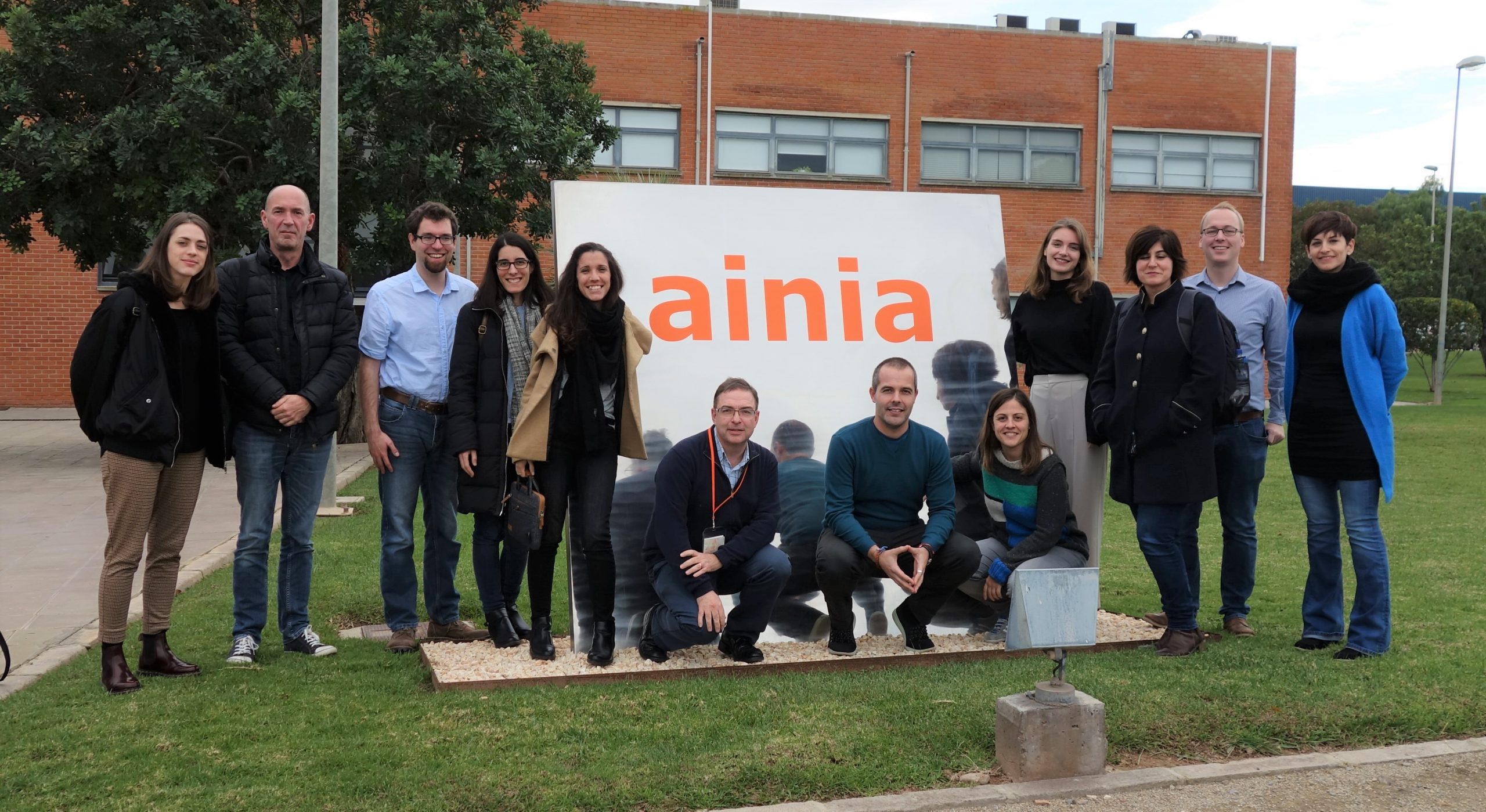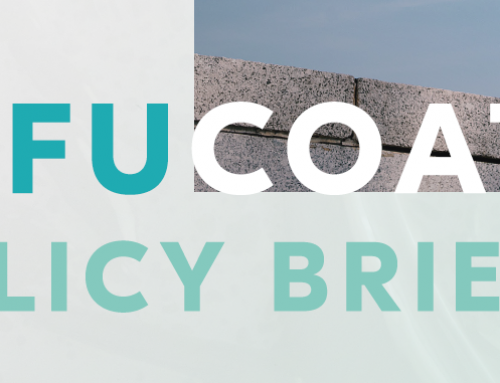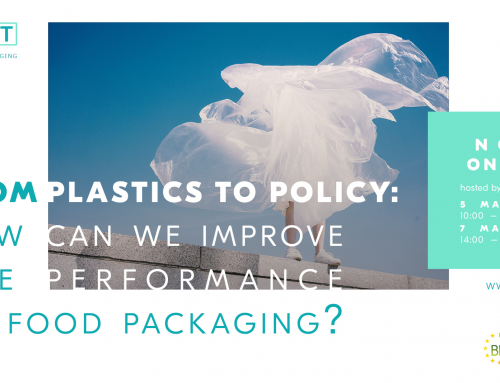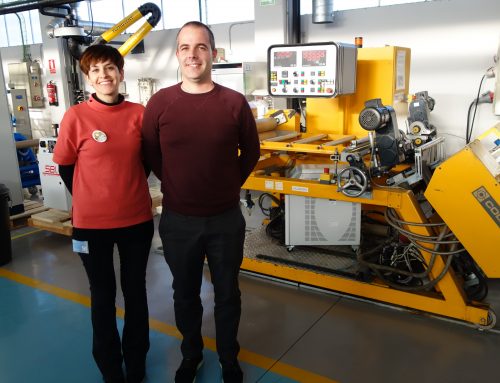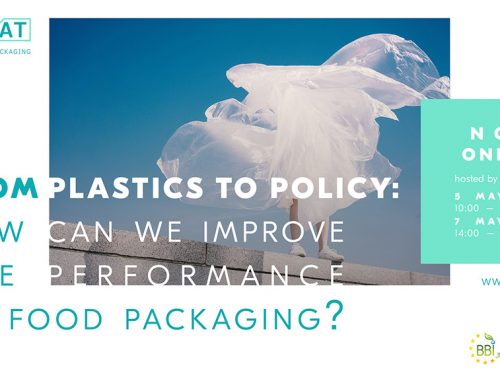REFUCOAT- Developing high-performance fully-recyclable bio-based food packaging
Over half a century ago, plastic brought a revolution to the food industry. This innovative packaging was light-weight and could keep out gas and moisture and protect food from deterioration during transport and storage. The primary objective was longer shelf life and food safety.
However, the rise of these materials and their suitability for food packaging came with a huge environmental and economic burden. This is mainly because the packaging material is multi-layered, often includes non-renewable sources (e.g. aluminium), can be difficult to recycle and it has high recycling costs. Now more than ever we need a sustainable plastic materials to ensure food safety and reduce the environmental impact of food packaging.
Towards the European plastics strategy 2030
As part of the move towards a circular economy, the European Commission has adopted a plastics strategy in which all plastics on the EU market will be recyclable by 2030. In a circular economy, the value of products and materials is maintained for as long as possible. Waste and resource use are minimised, and when a product reaches the end of its life, it is used again to create further value. This can bring major economic benefits, contributing to innovation, growth and job creation. When thinking about a sustainable and circular plastics environment, it’s important to take into account the whole life cycle assessment of the plastic production process.
REFUCOAT takes on the challenge
REFUCOAT is funded by the Bio-Based Industries Joint Undertaking under the European Union’s Horizon 2020 Research and Innovation programme. A multidisciplinary team of researchers is working on the development and use of totally recyclable and biodegradable packaging materials and of packaging coatings with high barrier properties.

Figure 1: the REFUCOAT consortium
The final objective of REFUCOAT project is to develop different bio-based packages for chicken meat, cereals and savoury products. Depending on the main degradation factor affecting each different food (e.g. moisture, oxygen, microbes), the characteristics of the packages need to be carefully selected and designed. The final packages will have good mechanical, thermal and barrier properties as the current metallised and non-bio-based alternatives.
The REFUCOAT project was conceived with this concept of circularity at its core. The team is working on research lines spanning the full life span of packaging production, use and disposal.
Efficient use of renewable materials for producing biopolymers for packaging and coatings
Middle chain polyhydroxyalkanoates (PHA) are biopolymers with physical properties similar to fossil-based plastics synthesized by microorganisms. In general, bioplastics have lower barrier properties to gases and humidity than oil-based plastics. This is not the case of PHAs, which are totally biodegradable biopolymers with a low moisture permeability, making them a good alternative for fresh meat packaging. As this material is biodegradable by composting, it can be converted into high quality fertilizer usable as soil improvement.
REFUCOAT has successfully used the by-product of one of our industrial partners as a source material for production of PHA via microbial fermentation. In this case, the by-product used is low-quality flour that would otherwise be wasted.
REFUCOAT also aims to explore the use of polyglycolic acid (PGA) as a high-barrier coating for biobased food packaging films. The advantages of PGA are that it is a fully biodegradable material with thermoplastic behaviour and good compatibility with both other biopolymers and traditional plastics like polyolefins. It also has excellent water barrier properties, making it a promising material for use in food packaging. They will provide an alternative to metallic coatings, which require a complex and expensive recycling process.
As part of REFUCOAT, ongoing research is focussing on applying a layer of PGA to the packaging foundation layer to enhance the barrier properties that are important to keep the packaged food’s quality over time. The layer should, for example, prevent water from entering a package of crisps (would make them soggy) or from getting out of a package of fresh chicken (would dry out the meat).
Polyglycolic acid’s precursor, glycolic acid (GA) is currently produced from fossil-based raw materials. Current PGA production uses a multistep process from GA to PGA, resulting in a high priced product. Microbial production from renewable, bio-based materials has been studied intensively in recent years but generally result in low yields and are therefore not competitive enough to replace the current petrol-based technologies.
REFUCOAT has developed for the first time an efficient process for producing GA under industrially relevant conditions, and with high yields and good selectivity. Furthermore, the project has developed a new trial set up that allows the production of PGA by continuous polycondensation with the possibility to scale-up to production scale, eliminating the need for a batch production.
Active coatings to maintain quality and increase shelf life
Active packaging absorbs or releases substances in order to improve the quality of packaged food or to extend its shelf life. REFUCOAT is exploring the incorporation of some natural antifungal, antibacterial and antioxidant substances into their final packaging structures for fresh chicken meat, snacks and cereals. Their approach has been to develop active coatings suitable for application on bio-based packaging films.
Raw poultry meat remains a source of bacterial contamination in home kitchens as it can contain Campylobacter and Salmonella which are responsible for a large percentage of foodborne illness in the EU each year. Bacteriophages are at type of virus that selectively infect bacteria. For example, a bacteriophage of Salmonella will attack only Salmonella preventing its replication and spread, making them promising candidates for use in antimicrobial food packaging. They are the most abundant microorganisms in our environment, naturally present in food and water, and harmless to humans. Advantages of bacteriophages are that they are highly stable for storage, and have been recognized as save by some regulatory bodies (e.g. the FDA).
REFUCOAT has developed an active coating that contains antimicrobial bacteriophages to attack unwanted bacterial growth. These coatings achieve a significant reduction in Salmonella growth when used in modified atmosphere packaging (MAP) packaged chicken breast samples.
Dry foods such as crisps and breadcrumbs pose different challenges to fresh meat products. Crisps and breadcrumbs need to stay crunchy for a long time, while not losing or taking up any flavours to/from the environment they are stored in.
REFUCOAT is developing an antioxidant coating based on bioactive herb essential oils, that can be applied to commercial biobased packaging materials to preserve the freshness of these dry foods.
Design, fabrication and characterisation of REFUCOAT packaging structures
Following the development of bio-based packaging materials and high-performance coatings, REFUCOAT combines this knowledge with the specific preservation needs of each food in order to design and produce appropriate packaging structures for each product.
REFUCOAT is validating each new packaging structure they develop and comparing their performance to current metallised, non-bio-based alternatives in industrial products. In addition to performance partners are also comparing shelf-life and biodegradability to traditional packaging products currently on the market. Safety and regulatory compliance, environmental and economic sustainability will be specifically addressed
Specifically the innovative barrier and active coatings developed during the project are combined with commercial bio-PE, bio-PET and REFUCOAT PHA and polylactic acid (PLA) to produce high-performance packaging structures for free chicken meat, breadcrumbs and crisps (Figure 2). The bio-based materials used in the packaging make sure that they are a sustainable alternative to current packaging.
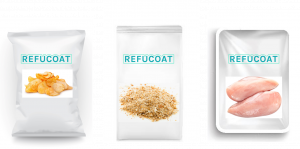
Figure 2. REFUCOAT packaging structures (i) Packaging structure for crisps: BIOPET/coating/BIOPE. (ii) Packaging structure for breadcrumbs: PLA/PHA/coating/BOPLA. (iii) Packaging structure for chicken: Film: BOPLA/coating, tray: PLA/PHA active coating containing bacteriophages.
This article is reproduced from the April 2020 edition of the Project Repository Journal.

